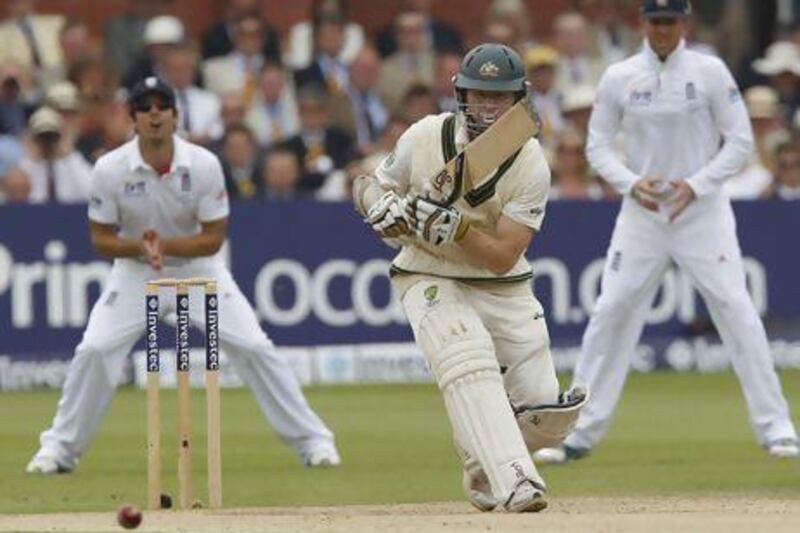Unless Australia's down-and-out batsmen could summon up the spirit of Trumper, Bradman, Harvey and Waugh, it was certain that they would leave Lord's down 2-0 in the series, with hopes of regaining the Ashes next to non-existent.
England were sloppy with the bat in the first three innings of the series, but a ruthless second innings at Lord's, spearheaded by the hugely promising Joe Root, has once again illustrated the gulf in batting quality between the two sides.
Back in 2010/11, Australia lost three home Ashes Tests by an innings, even with the likes of Ricky Ponting and Michael Hussey in the side. Now, with a line-up as robust as mouldy toast, they have been left to rely on lower-order heroics to stay in the game. At Lord's, even that didn't happen, as they were skittled for just 128 in ideal batting conditions.
The feel-good factor created by the appointment of Darren Lehmann as coach has all but dissipated.
James Sutherland, Cricket Australia's chief executive, had waxed eloquent about how different things were in the build-up to this Test, and Gideon Haigh, Australia's most articulate and acerbic cricket columnist, pointed out just how illogical such a belief had been.
"If Sutherland genuinely believes that Australia is suddenly a 'different team' in a 'different place', then he is on a different planet," he wrote in his column in The Australian.
"What this second Test has shown in cruel relief is not just the diminished condition of Australian cricket, but the wishful thinking that surrounds it – thinking that is arguably now an obstacle to its restoration.
"This also serves to stave off more serious questions such as: how strong is our first-class system?; what is the impact of carving two months out of the middle of it to play domestic T20?; does our Centre of Excellence work as advertised?; why in the whole of Australia is there not a single young batsman capable of playing as yesterday did 22-year-old Root, with such patience and aplomb, attempting nothing exotic until he was well in, otherwise methodically turning the strike over until the field seemed like one big gap."
Even the much-maligned Indian cricket board have been made to look like visionaries by Cricket Australia's bunglers.
The Indian Premier League is played at the end of the season – it doesn't eat into the domestic cricket calendar.
Contrast that with CA, who play the Big Bash right when the Test side is in action. The decline in batting stocks is also undeniable. In the last Sheffield Shield season, only Ponting and Chris Rogers, 35, made three centuries.
Of those pushing for baggy-green selection, only Joe Burns and Jordan Silk made two. Contrast that with the season before the last tour of England, when Michael Klinger (four centuries), Rogers (five) and Phillip Hughes (four) all made strong cases for selection.
After four innings, only Ashton Agar, who started off at No 11, has tallied more than 100 runs.
Ian Bell alone has scored nearly as much (317 runs) as Australia's top order combined. And though Australia A managed to see off a Zimbabwe Select XI by 80 runs in Harare, their totals of 226 and 156 said much about the lack of batting alternatives. Batting at No 4, David Warner made six and 11.
It will get worse before it gets better, as long as Cricket Australia continues to fiddle like Nero did.
Follow us
[ @SprtNationalUAE ]





